VIDEO: The understated chameleon – Omega’s Seamaster Railmaster
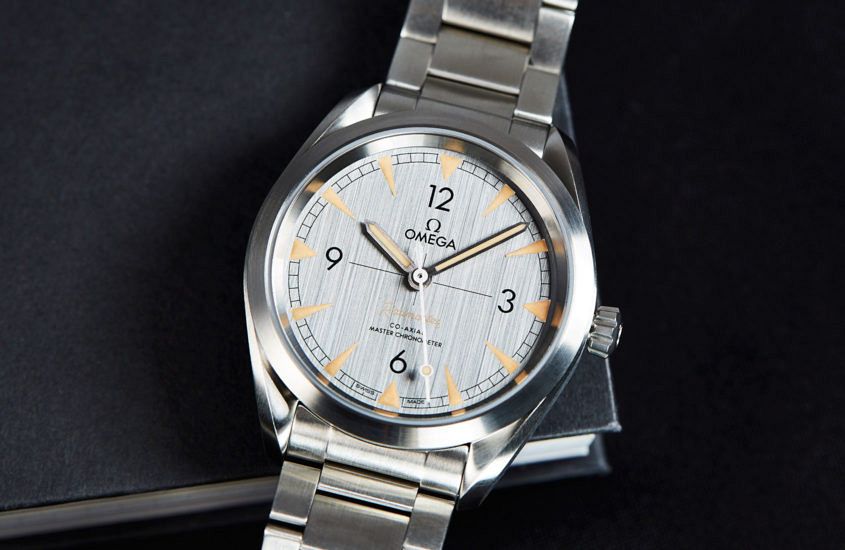 The Omega Seamaster Railmaster was one of the surprise hits of last year’s Basel fair. So it’s vaguely appropriate that as we’re busy speculating what we’ll see Omega release at Baselworld 2018, we look back on one of their hottest from last season. Not that we realised it at the time – the regular production Seamaster Railmaster was more of a slow burn. It’s a deceptively simple piece, lacking the hero status of its limited edition sibling, and somewhat lacking in obvious bells and whistles. Rather than being a weakness, this simplicity is the Railmaster’s greatest strength. Clean, pure design, of the sort that Omega excels at: classic, but with fine details — like the brushed dial and Railmaster text — that reward close inspection. But even though I’d be completely happy with this watch on my wrist, there’s a part of me holding out to see what gets unveiled next week …
The Omega Seamaster Railmaster was one of the surprise hits of last year’s Basel fair. So it’s vaguely appropriate that as we’re busy speculating what we’ll see Omega release at Baselworld 2018, we look back on one of their hottest from last season. Not that we realised it at the time – the regular production Seamaster Railmaster was more of a slow burn. It’s a deceptively simple piece, lacking the hero status of its limited edition sibling, and somewhat lacking in obvious bells and whistles. Rather than being a weakness, this simplicity is the Railmaster’s greatest strength. Clean, pure design, of the sort that Omega excels at: classic, but with fine details — like the brushed dial and Railmaster text — that reward close inspection. But even though I’d be completely happy with this watch on my wrist, there’s a part of me holding out to see what gets unveiled next week …
The post VIDEO: The understated chameleon – Omega’s Seamaster Railmaster appeared first on Time and Tide Watches.
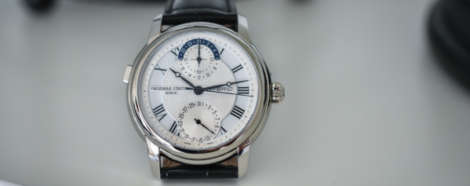
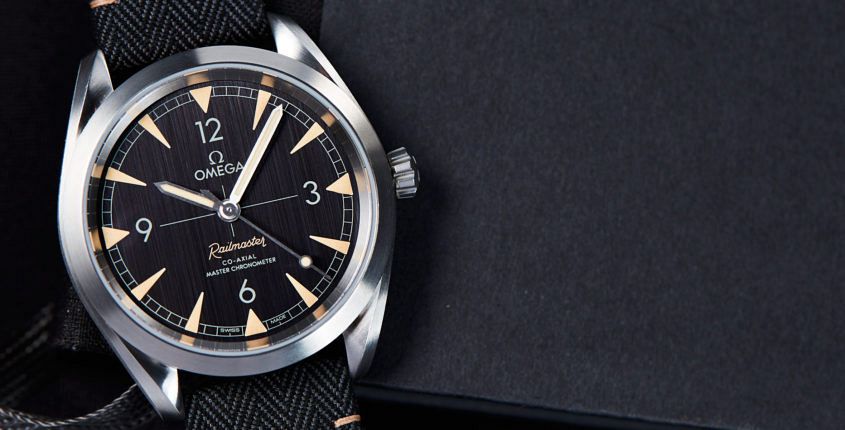 The story in a second: Behind the ultra-hyped trilogy models lays this cool, calm and not-in-any-way limited take on the Railmaster. Odd as it may seem today, but many of the enduring designs of mid-twentieth century watchmaking sprang from a very specific purpose: scientific exploration and the quest for accuracy. The Omega Railmaster, one of their original professional models, stands alongside other great names like the Milgauss, the Ingenieur and the Geophysic. And last year the Railmaster received a major upgrade. Not just in the near 1:1 limited edition re-creation but in this new interpretation: the Seamaster Railmaster. The case Not too little, not too large: 40mm is pretty much perfect for this style of watch, but that’s not all that stands out. The case is pretty much identical in form to the Aqua Terra, except for the finishing. While the AT is all about polished lines and reflected light, the Railmaster is muted and matt, thanks to its satin-brushed finish, something that totally fits with the model’s utilitarian origin story. The crown is conical and easy to use (always a plus in my book), and the lugs are that sweeping twisted style that is such a hallmark of Omega.…
The story in a second: Behind the ultra-hyped trilogy models lays this cool, calm and not-in-any-way limited take on the Railmaster. Odd as it may seem today, but many of the enduring designs of mid-twentieth century watchmaking sprang from a very specific purpose: scientific exploration and the quest for accuracy. The Omega Railmaster, one of their original professional models, stands alongside other great names like the Milgauss, the Ingenieur and the Geophysic. And last year the Railmaster received a major upgrade. Not just in the near 1:1 limited edition re-creation but in this new interpretation: the Seamaster Railmaster. The case Not too little, not too large: 40mm is pretty much perfect for this style of watch, but that’s not all that stands out. The case is pretty much identical in form to the Aqua Terra, except for the finishing. While the AT is all about polished lines and reflected light, the Railmaster is muted and matt, thanks to its satin-brushed finish, something that totally fits with the model’s utilitarian origin story. The crown is conical and easy to use (always a plus in my book), and the lugs are that sweeping twisted style that is such a hallmark of Omega.…
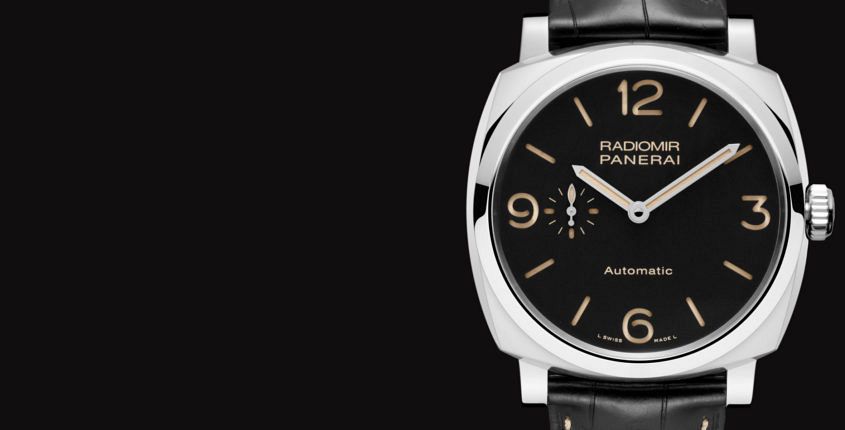 When I told a Panerai-loving friend that after years of looking only at the Luminor I was starting to favour the Radiomir, he wasn’t at all surprised. “It’s called maturity,” he said. While that seems unlikely, there is definitely something more refined and self-assured in the smooth, uninterrupted lines of the Radiomir’s cushion case. Something perhaps more versatile and classic in its application, too; a man for, if not all, then more seasons? Whatever the case, the reasons for choosing the Radiomir as your next Panerai extend well beyond its considerable aesthetic charms. The Radiomir — as I discovered in the video that explores the contrasts in Panerai’s two main collections — tells the lion’s share of the brand’s interesting history, despite the younger, more muscled and glamorous younger brother getting the limelight. This review of the PAM 00514 Radiomir 1940 should help acquaint you with more of the details that make the watch special in its own right.
When I told a Panerai-loving friend that after years of looking only at the Luminor I was starting to favour the Radiomir, he wasn’t at all surprised. “It’s called maturity,” he said. While that seems unlikely, there is definitely something more refined and self-assured in the smooth, uninterrupted lines of the Radiomir’s cushion case. Something perhaps more versatile and classic in its application, too; a man for, if not all, then more seasons? Whatever the case, the reasons for choosing the Radiomir as your next Panerai extend well beyond its considerable aesthetic charms. The Radiomir — as I discovered in the video that explores the contrasts in Panerai’s two main collections — tells the lion’s share of the brand’s interesting history, despite the younger, more muscled and glamorous younger brother getting the limelight. This review of the PAM 00514 Radiomir 1940 should help acquaint you with more of the details that make the watch special in its own right.
 If you’re a regular reader, I’m willing to bet that your views around quartz timekeeping will be pretty negative. After all, this is a technology that was (almost) responsible for the downfall of mechanical watches. But, as you’re about to find out, not all quartz watches were created equal. Sure, there’s the cheap and cheerful plastic contraptions that consist of battery, circuit board and a very big spacer. And then there’s the 9F. Seiko pioneered quartz technology with the release of the Astron back in 1969, and they’ve innovated ever since. Of all their many achievements in the field, one of the most impressive is the 9F, introduced in 1993 as part of Grand Seiko’s quartz line. Simply put, it’s a true, high-end quartz movement, treated with the same level of care and precision as a traditional mechanical movement. Hand-assembled, with 133 parts, an aged quartz crystal, which is paired with a specifically programmed integrated circuit, for optimal accuracy. Not to mention the sealed, finely aligned coil block. The date wheel shifts in 1/2000th of a second, and the whole thing can go for 50 years without needing lubrication. And on the accuracy front, it’s good for +/- 10 seconds…
If you’re a regular reader, I’m willing to bet that your views around quartz timekeeping will be pretty negative. After all, this is a technology that was (almost) responsible for the downfall of mechanical watches. But, as you’re about to find out, not all quartz watches were created equal. Sure, there’s the cheap and cheerful plastic contraptions that consist of battery, circuit board and a very big spacer. And then there’s the 9F. Seiko pioneered quartz technology with the release of the Astron back in 1969, and they’ve innovated ever since. Of all their many achievements in the field, one of the most impressive is the 9F, introduced in 1993 as part of Grand Seiko’s quartz line. Simply put, it’s a true, high-end quartz movement, treated with the same level of care and precision as a traditional mechanical movement. Hand-assembled, with 133 parts, an aged quartz crystal, which is paired with a specifically programmed integrated circuit, for optimal accuracy. Not to mention the sealed, finely aligned coil block. The date wheel shifts in 1/2000th of a second, and the whole thing can go for 50 years without needing lubrication. And on the accuracy front, it’s good for +/- 10 seconds…

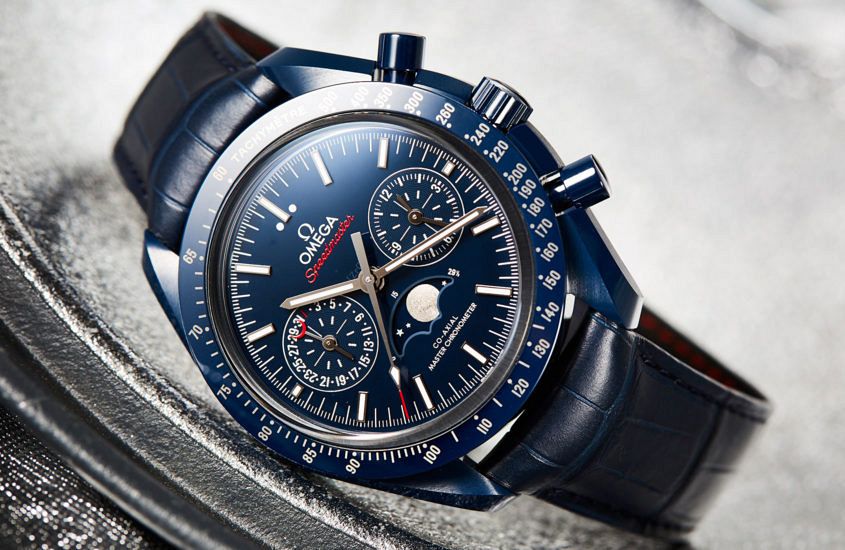 Omega’s ceramic exploration of the Moonwatch has been underway for some time now, starting with the popular Dark Side of the Moon back in 2013. Since then, we’ve seen a bevy of monochromatic models, with numerous blacks on offer, as well as grey and white. Last year, Omega flipped the program a little, adding colour – and additional complication – to the equation with the Speedmaster Co-Axial Master Chronometer Moonphase Chronograph … AKA the ‘Blue Side of the Moon’. The first Moonphase version of the Speedmaster, powered by the calibre 9904, was released in 2016, and we remarked at the time that it was a logical and clever take on the famous Moonwatch, and, a few years on, I still stand by that statement. The blue ceramic, though, adds a whole new element to this watch. Previous monochrome ceramic iterations of the Speedmaster managed to somewhat slip under the radar (well, except for the white version). That is not an option for this 44.25mm blue number. While in certain light it does look quite dark, almost navy; when the light hits it, the watch becomes iridescent. It’s worth pointing out that all the details — pushers, crown and caseback — are ceramic.…
Omega’s ceramic exploration of the Moonwatch has been underway for some time now, starting with the popular Dark Side of the Moon back in 2013. Since then, we’ve seen a bevy of monochromatic models, with numerous blacks on offer, as well as grey and white. Last year, Omega flipped the program a little, adding colour – and additional complication – to the equation with the Speedmaster Co-Axial Master Chronometer Moonphase Chronograph … AKA the ‘Blue Side of the Moon’. The first Moonphase version of the Speedmaster, powered by the calibre 9904, was released in 2016, and we remarked at the time that it was a logical and clever take on the famous Moonwatch, and, a few years on, I still stand by that statement. The blue ceramic, though, adds a whole new element to this watch. Previous monochrome ceramic iterations of the Speedmaster managed to somewhat slip under the radar (well, except for the white version). That is not an option for this 44.25mm blue number. While in certain light it does look quite dark, almost navy; when the light hits it, the watch becomes iridescent. It’s worth pointing out that all the details — pushers, crown and caseback — are ceramic.…